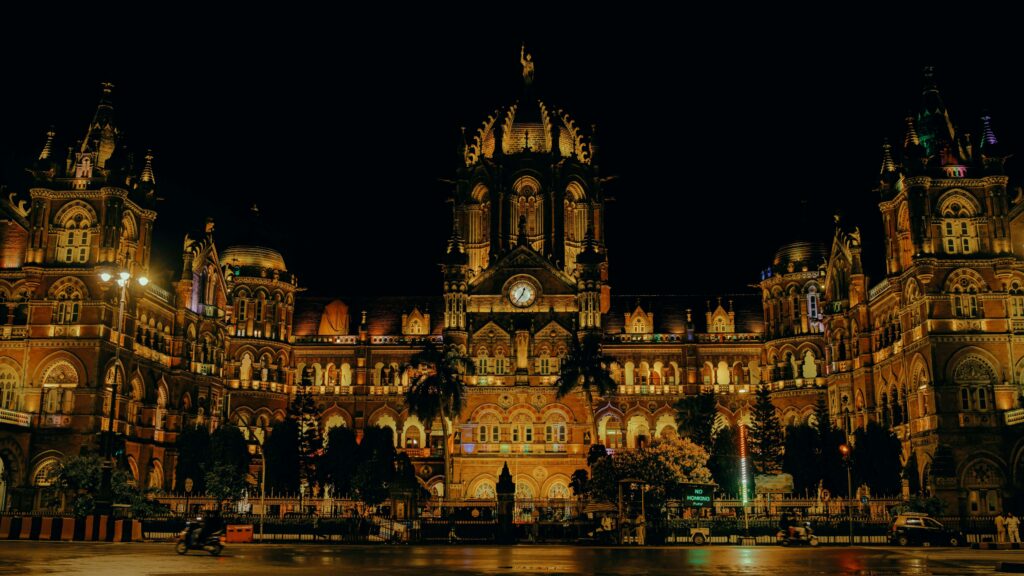
Chhatrapati Shivaji Maharaj Terminus (CSMT) is not only one of Mumbai’s busiest transportation hubs but also a stunning example of architectural grandeur. This iconic landmark, a UNESCO World Heritage Site, is a must-see destination for international tourists visiting India. Its historical significance, coupled with its awe-inspiring design, makes it one of the most celebrated buildings in the country.
A Rich History
Chhatrapati Shivaji Maharaj Terminus was built in place of Bori Bunder Railway station, from where India’s first passenger ran to Thane.
The earlier station was just a temporary wooden building with a single track, which was replaced by a glorious Italian-Gothic style railway building called Victoria Terminus in honor of the British monarch. It was inaugurated in 1887 to mark the Golden Jubilee of Queen Victoria’s reign & designed by British architect Frederick William Stevens, a celebrated architect of his times who was born in Bath.
It served as the headquarters of the Great Indian Peninsula Railway (GIPR), and for much of its history, it stood as a symbol of British colonial power and modernity in India.
The station was later renamed Chhatrapati Shivaji Terminus in 1996 to honor the great Maratha king, Chhatrapati Shivaji Maharaj, a revered figure in Indian history known for his leadership, military prowess, and contributions to Indian culture. The name was modified to Chhatrapati Shivaji Maharaj Terminus in 2017 to give due homage to the great Maratha emperor.
Architectural Marvel
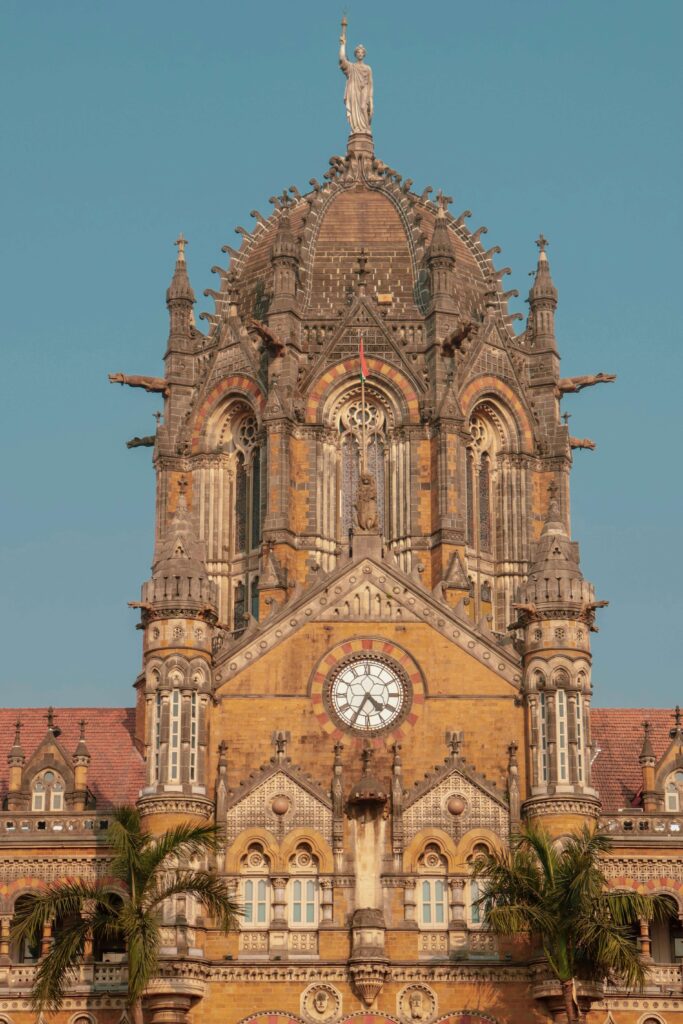
As you approach Chhatrapati Shivaji Maharaj Terminus, the first thing that strikes you is its imposing façade. Its design is a fusion of Victorian Gothic and traditional Indian architectural styles, combining elements of Romanesque, Byzantine, and Hindu architecture. This blend creates a structure that is not only functional but also aesthetically breathtaking.
The station’s exterior is a grand mix of stone, arches, and intricate carvings, punctuated by towering spires that reach towards the sky. The main entrance is ornamented with an impressive clock tower, which has become one of the station’s most recognizable features.
Chhatrapati Shivaji Maharaj Terminus Exterior
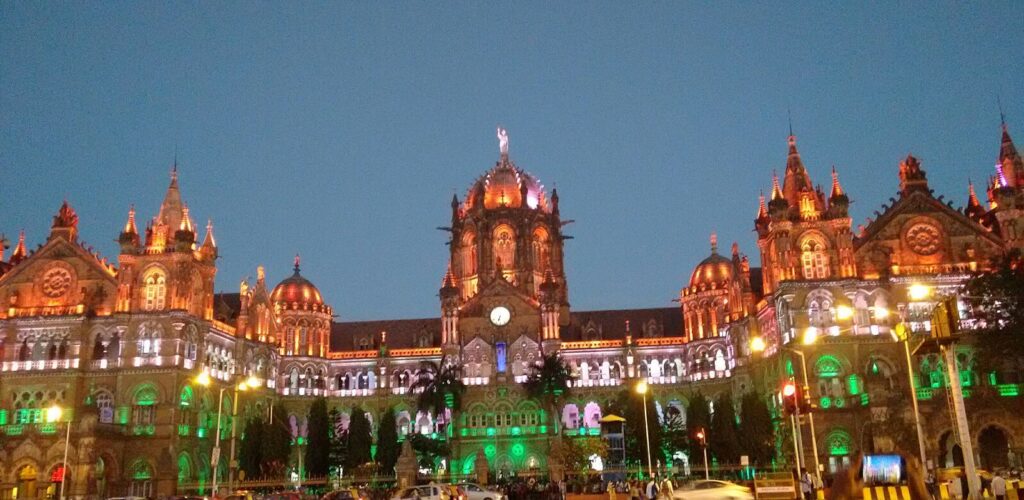
The building’s design draws inspiration from both European Gothic and Indian architecture, with ornate carvings, arches, and statues of animals and mythical creatures decorating the walls. The façade also features large, arched windows, which allow natural light to flood the interior. Visitors can marvel at the fusion of European and Indian elements in the structure, with some aspects mirroring the architectural style found in Rajasthan’s palaces and forts.
Chhatrapati Shivaji Maharaj Terminus Interior
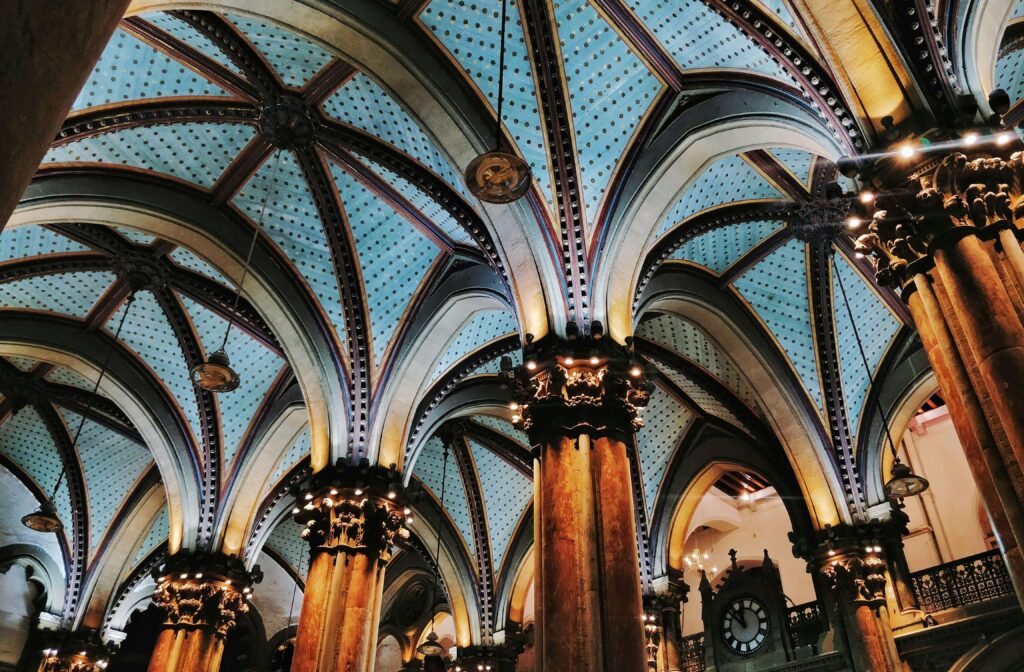
Inside, the station is equally impressive. The main concourse is vast, with high ceilings supported by ornate steel beams. The ceiling’s design reflects the Victorian era’s obsession with ornate detail, while the flooring is made from intricate mosaic tiles, adding another layer of beauty to the space.
The station is a living example of Victorian Gothic Revival architecture, which was a significant movement in 19th-century design. The fusion of Gothic elements with Indian motifs speaks volumes about India’s colonial past, while also showcasing the richness of its cultural heritage.
Chhatrapati Shivaji Maharaj Terminus: A UNESCO World Heritage Site
In 2004, Chhatrapati Shivaji Terminus was inscribed as a UNESCO World Heritage Site, recognizing its exceptional architectural and historical value. The status as a UNESCO World Heritage Site highlights the importance of the structure not only for India but for the global community as well.
The designation also ensures that the building is preserved for future generations. International tourists visiting Mumbai are often awestruck by the station’s grandeur, and it has become a key stop on many architectural tours of the city. The recognition brings attention to the efforts made to conserve and maintain this heritage structure while continuing to use it as an active transportation hub.
How to Visit Chhatrapati Shivaji Maharaj Terminus
Chhatrapati Shivaji Terminus is located in the heart of South Mumbai, making it easily accessible for international tourists. It is well-connected by Mumbai’s local trains, buses, and taxis, and can be reached from almost any part of the city. The station is a central part of Mumbai’s public transport system, and its location makes it an ideal starting point for exploring the city.
For international tourists, visiting CSMT provides a unique opportunity to experience Mumbai’s bustling energy while taking in one of its most important historical landmarks. Many tourists take time to admire the architecture, click photos, and explore the area around the station, which includes the famous Marine Drive and Colaba district.
If you’re traveling by train from other parts of India, Chhatrapati Shivaji Terminus will likely be the last railway station in Mumbai (Mumbai has a few more stations like Mumbai Central, Dadar where the trains terminate their journeys).
What to do at Chhatrapati Shivaji Maharaj Terminus
While at the station, visitors can enjoy the bustle of commuters, shop for souvenirs, or relax at nearby cafes.
For those interested in guided tours, several companies offer walking tours that include the station’s architecture, history, and surrounding areas. These tours provide valuable insights into its significance, both as a colonial monument and as a living, breathing part of Mumbai’s daily life.
Please note that Chhatrapati Shivaji Maharaj Terminus and Chhatrapati Shivaji Maharaj Vastu Sangrahalaya are two different sites and are a half-hour’s walk.
Attractions near Chhatrapati Shivaji Maharaj Terminus
While the primary draw of Chhatrapati Shivaji Maharaj Terminus is its architectural beauty and historical significance, the area surrounding the station is filled with other attractions that international tourists will find fascinating.
You can also read Everything You Need to Know about the Gateway of India: A Complete Guide for the Tourists and Everything You Need to Know about 32 Totally Free Places in Mumbai to Enjoy: A Complete Guide for the Tourists to get a comprehensive idea of what to do when at the Chhatrapati Shivaji Maharaj Terminus.
Tips for International Tourists
- Photography: Chhatrapati Shivaji Terminus is an architectural gem, so bring a camera. However, be aware that it is a busy travel hub. While you will get to see the vibes of the city that never sleeps, give people their way as they rush in and out.
- Time of Visit: CSMT can get crowded during rush hours, so visiting either very early in the morning (between 5AM to 7 AM) or late in the evening (9PM to 11PM) is ideal if you want to avoid the crowds.
- Safety: While the area around CSMT is generally safe for tourists, it’s always wise to stay aware of your surroundings, particularly in busy areas.
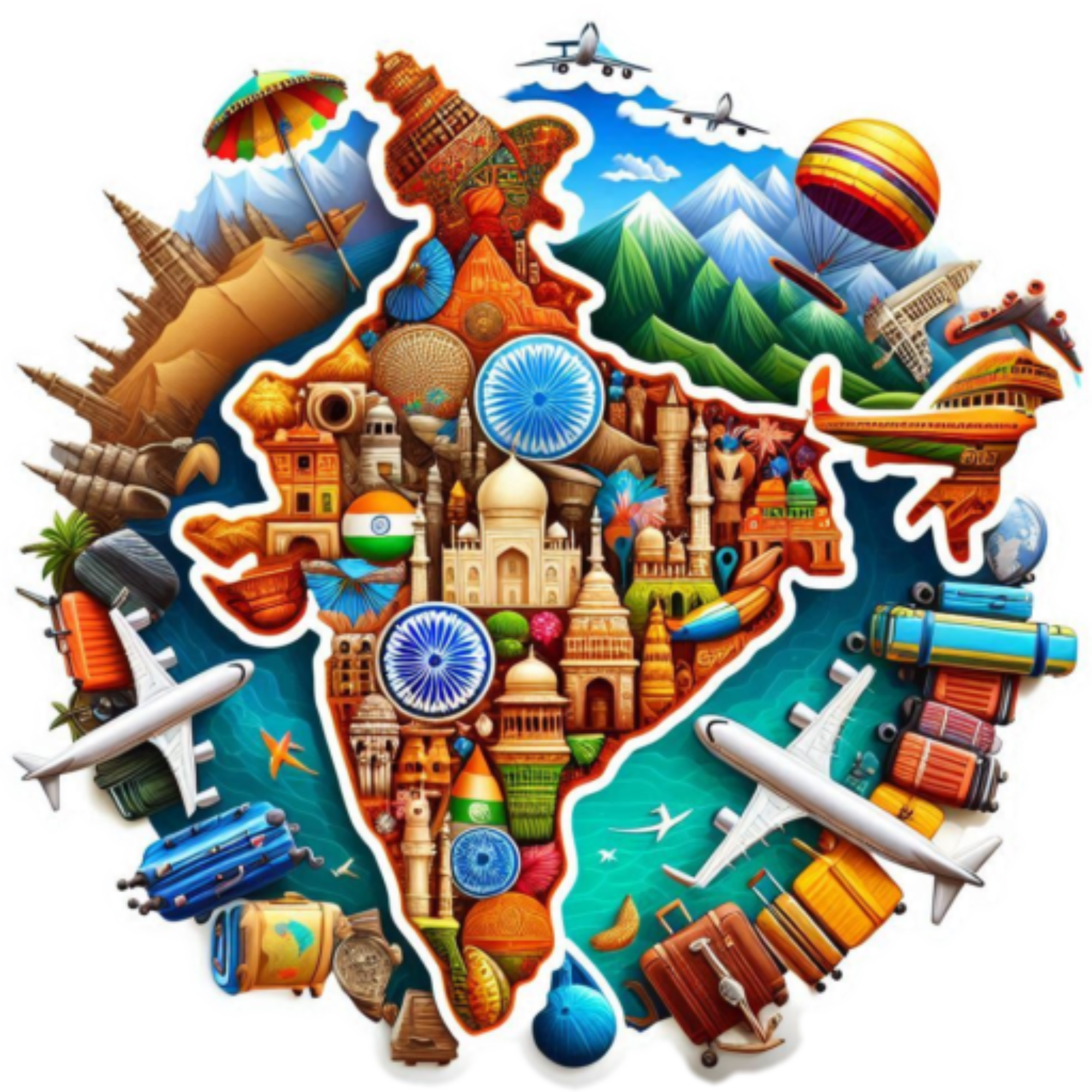



Pingback: Everything You need to Know about 32 Totally Free Places in Mumbai to Enjoy: A Complete Guide for the Tourists - Traveling to India?